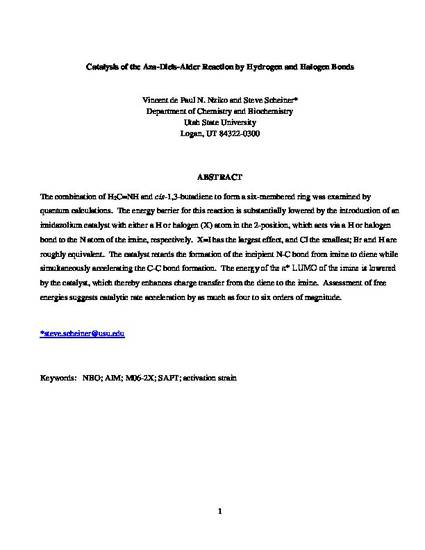
The combination of H2C=NH and cis-1,3-butadiene to form a six-membered ring was examined by quantum calculations. The energy barrier for this reaction is substantially lowered by the introduction of an imidazolium catalyst with either a H or halogen (X) atom in the 2-position, which acts via a H or halogen bond to the N atom of the imine, respectively. X=I has the largest effect, and Cl the smallest; Br and H are roughly equivalent. The catalyst retards the formation of the incipient N-C bond from imine to diene while simultaneously accelerating the C-C bond formation. The energy of the π* LUMO of the imine is lowered by the catalyst, which thereby enhances charge transfer from the diene to the imine. Assessment of free energies suggests catalytic rate acceleration by as much as four to six orders of magnitude.

Reprinted (Adapted or Reprinted in part) with permission from nziko, v., Scheiner, S. I. (2016). Catalysis of the Aza-Diels-Alder Reaction by Hydrogen and Halogen Bonds. J. Org. Chem., 81, 2589-2597. Copyright 2016 American Chemical Society.